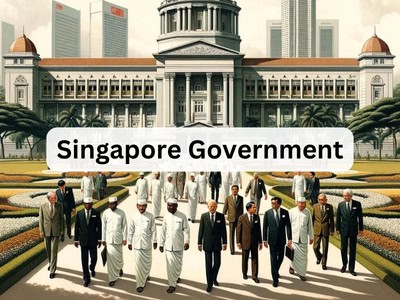This post is also available in:
简体中文 (Chinese (Simplified))
Introduction of Singapore Government

The Executive branch consists of the President and the Cabinet of Singapore. The President acts at their own personal discretion in carrying out certain roles and functions. The role of the President is still largely ceremonial.
The Prime Minister and other Singaporean Ministers which are elected by the President make up the Singapore Cabinet. They are the ones who will – in general – both control and direct the Government. The political party which gains a simply majority win in the country’s major election will be the party that forms the Cabinet.
The Singapore government has their own official online communication platform. This platform is the repository of the Singapore government, and it can be accessed via the www.gov.sg address. If you wish to view the latest information, the latest government-related events and news about Singapore, the information you seek can be found on this portal.
Singapore Government is a term which holds several meanings. The term can refer to the following:
- The three traditional branches of the government collectively (including the Executive, Judicial and Legislative branches).
- A combination of Legislature and Executive colloquially.
- Members of the Parliament.
A Brief History of Singapore’s Government
The term government, per the Constitution of the Republic of Singapore refers to the Executive branch, comprising of both the Cabinet and the President. Following Singapore’s independence from Britain and merger with Malaysia, The British High Commissioner’s role became an ambassador role. Other than that, the Singapore Government branch was largely unchanged.
Singapore gained full independence on 9 August 1965 after separating from Malaysia. At that point, the Singapore Government held onto its executive authority while simultaneously taking on additional executive authority roles which were relinquished by the Parliament of Malaysia.
Executive authority of Singapore was now vested with the Republic of Singapore Independence Act 1965. The President post was created.
The general perception towards the Singapore government is that they are competent when it comes to managing the economy of the country. The country is relatively free from political corruption. In 2010, Transparency International’s Corruption Perceptions Index report ranked Singapore in joint first place with Denmark and New Zealand out of the 178 countries which were surveyed.
What the Singapore Government Comprises Of
According to the Constitution, the Singapore Government is defined as the President and the Cabinet of Singapore. The power of executive authority lies vested in the President, and it is exercisable by either him, the Cabinet of Singapore or by any Minister which has been authorized by the Cabinet. However, the President’s role is largely nominal and ceremonial.
Singapore is a country which follows the Westminster system of the government. The Parliament’s legislative agenda is determined by the Cabinet. The President will give an address prepared by the Cabinet at the start of every Parliamentary session. This address will outline what the intended achievements of the Cabinet are.
Singapore Government’s Other Aspects
The other aspect which involve the Singapore Government are as follows:
- Statutory Boards: An autonomous agency which is part of the Government and established by the Act of Parliament. It is overseen by a government ministry.
- Minister of State and Parliamentary Secretaries: Members of Parliament can be appointed as Ministers of State to assist these Ministers in performing their functions. Parliamentary Secretaries are elected to assisted these Ministers in discharging their duties and functions. Parliamentary Secretaries are elected from among the Members of Parliament.
- Community Development Council and Mayors of Districts: Singapore has five Community Development Councils which are appointed by the board of management of the People’s Association. These districts are the Central Singapore CDC, North East CDC, South East CDC, North West CDC and South West CDC. Their functions include helping to foster community bonding and to strengthen social cohesion amongst the Singapore people.


